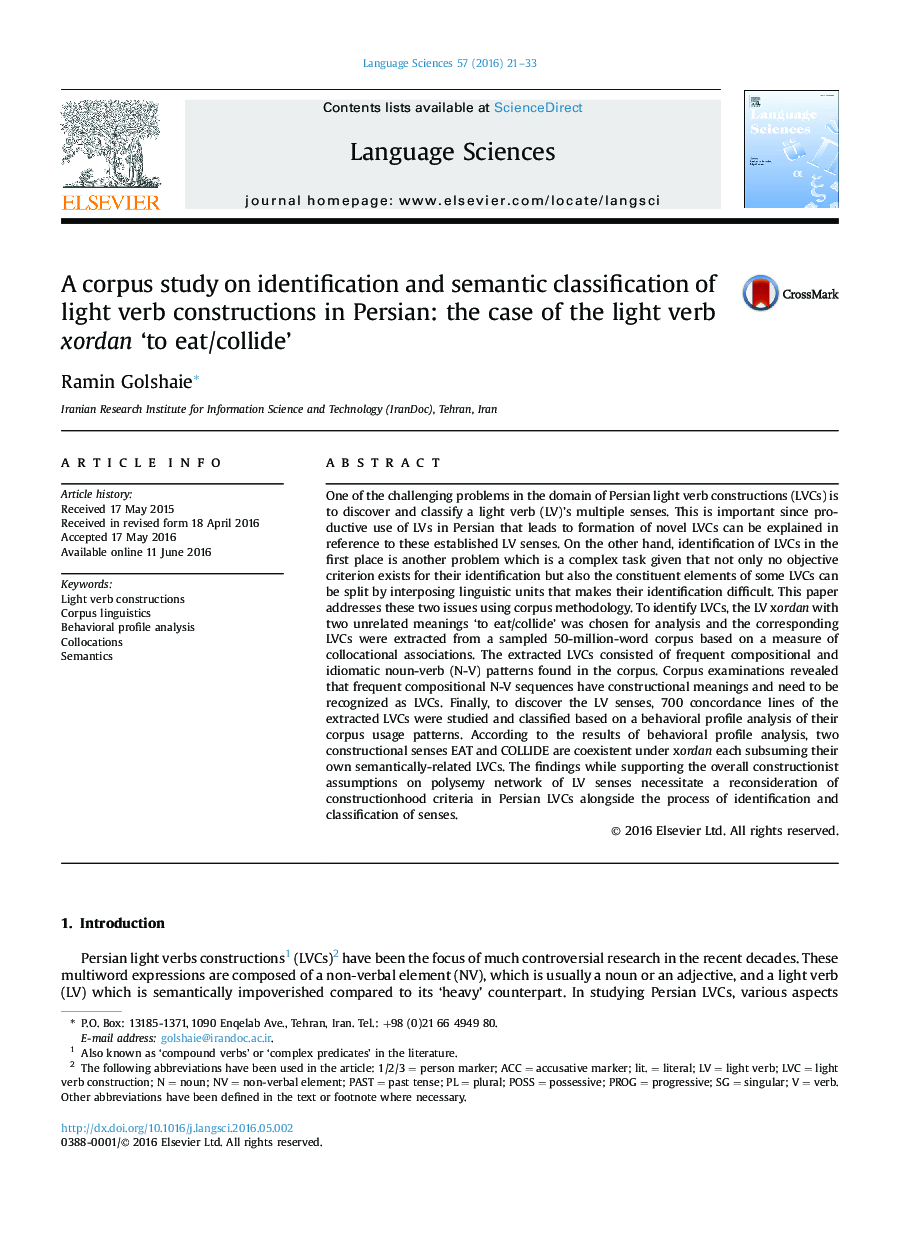| کد مقاله | کد نشریه | سال انتشار | مقاله انگلیسی | نسخه تمام متن |
|---|---|---|---|---|
| 1102977 | 1488146 | 2016 | 13 صفحه PDF | دانلود رایگان |
• Light verb constructions are identified based on collocational associations calculated from corpus.
• Constructional senses of the light verb xordan are classified using behavioral profile analysis.
• xordan-derived light verb constructions are semantically motivated by one of the two senses EAT or COLLIDE.
• Frequent patterns can form light verb constructions in spite of being compositional in meaning.
• Constructionhood criteria for identifying light verb constructions in Persian need to be reconsidered.
One of the challenging problems in the domain of Persian light verb constructions (LVCs) is to discover and classify a light verb (LV)'s multiple senses. This is important since productive use of LVs in Persian that leads to formation of novel LVCs can be explained in reference to these established LV senses. On the other hand, identification of LVCs in the first place is another problem which is a complex task given that not only no objective criterion exists for their identification but also the constituent elements of some LVCs can be split by interposing linguistic units that makes their identification difficult. This paper addresses these two issues using corpus methodology. To identify LVCs, the LV xordan with two unrelated meanings ‘to eat/collide’ was chosen for analysis and the corresponding LVCs were extracted from a sampled 50-million-word corpus based on a measure of collocational associations. The extracted LVCs consisted of frequent compositional and idiomatic noun-verb (N-V) patterns found in the corpus. Corpus examinations revealed that frequent compositional N-V sequences have constructional meanings and need to be recognized as LVCs. Finally, to discover the LV senses, 700 concordance lines of the extracted LVCs were studied and classified based on a behavioral profile analysis of their corpus usage patterns. According to the results of behavioral profile analysis, two constructional senses EAT and COLLIDE are coexistent under xordan each subsuming their own semantically-related LVCs. The findings while supporting the overall constructionist assumptions on polysemy network of LV senses necessitate a reconsideration of constructionhood criteria in Persian LVCs alongside the process of identification and classification of senses.
Journal: Language Sciences - Volume 57, September 2016, Pages 21–33
